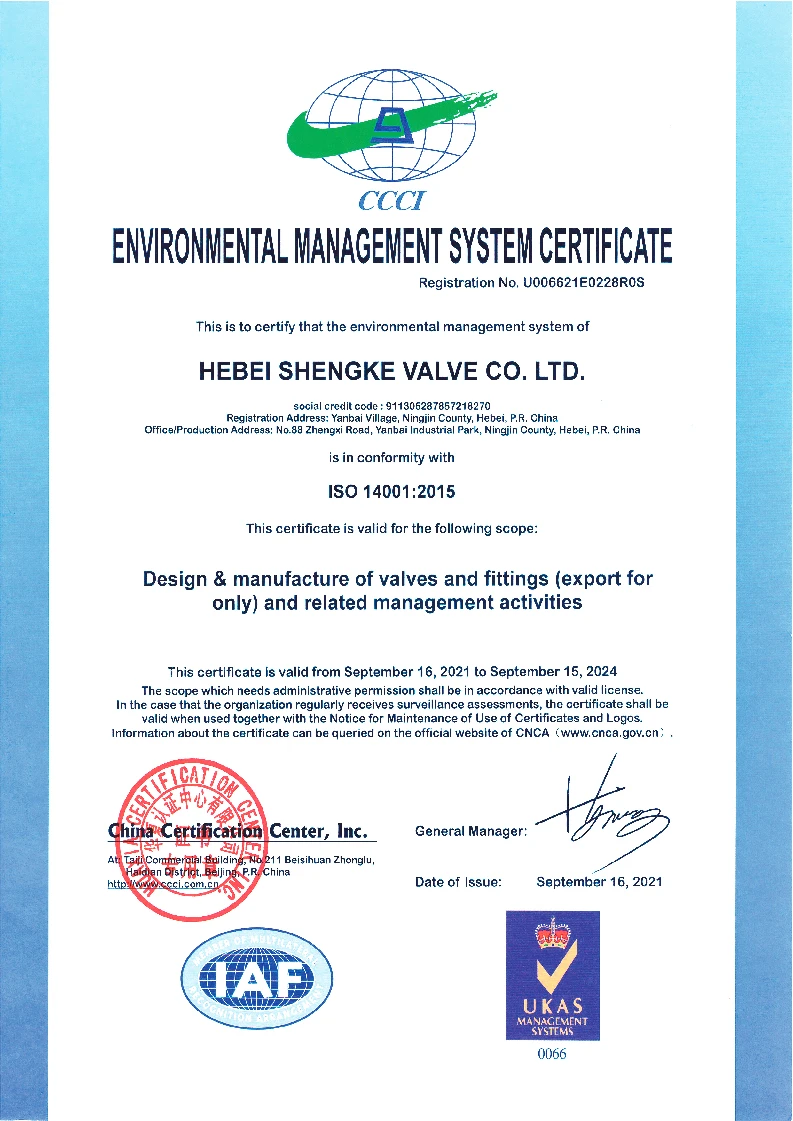des . 14, 2024 23:44 Back to list
air pressure control valve
Understanding Air Pressure Control Valves Function, Types, and Applications
Air pressure control valves are critical components in various pneumatic systems, playing a vital role in regulating airflow and maintaining desired pressure levels. Whether in manufacturing, automotive, or HVAC (Heating, Ventilation, and Air Conditioning) applications, these valves ensure that systems operate efficiently and safely. This article delves into the functionality, types, and applications of air pressure control valves.
Functionality of Air Pressure Control Valves
The primary function of an air pressure control valve is to maintain a specified pressure level within a given system. They achieve this by opening or closing in response to changes in pressure, effectively controlling the flow of air. When the pressure rises above a predefined threshold, the control valve will close partially or entirely, restricting airflow and preventing overpressure. Conversely, if the pressure drops below the set point, the valve opens to allow more air into the system, thereby restoring the desired pressure level.
These valves are typically equipped with pressure sensors and controllers that monitor system conditions continuously. Upon detecting pressure deviations, the control valves react accordingly, providing real-time regulation. This automatic adjustment capability not only enhances system performance but also safeguards against potential damage due to pressure fluctuations.
Types of Air Pressure Control Valves
There are several types of air pressure control valves, each designed for specific applications and operational requirements. Some of the most common types include
1. Regulating Valves These valves are designed to maintain a constant outlet pressure despite fluctuations in inlet pressure or demand. They are widely used in pneumatic systems to ensure consistent performance.
2. Relief Valves Relief valves are essential for safety in many industries. They automatically release excess pressure from the system to prevent potential hazards. In the event of overpressure, they vent air safely, protecting equipment and operators.
3. Solenoid Valves These electrically operated valves are used for precise control over airflow. When an electric current flows through the solenoid, the valve opens or closes, allowing for rapid response times. Solenoid valves are common in automation and control systems.
air pressure control valve

4. Flow Control Valves While primarily aimed at regulating the rate of airflow, these valves indirectly influence air pressure in a system. By controlling how much air enters a section of the system, they help in maintaining desired pressure levels across various components.
Applications of Air Pressure Control Valves
Air pressure control valves find application in a range of industries, including
- Manufacturing In automated assembly lines, pneumatic tools and robots rely on consistent air pressure for optimal operation. Air pressure control valves ensure that these tools function effectively, reducing downtime and enhancing productivity.
- HVAC Systems Maintaining indoor air quality and comfort involves controlling temperature and humidity levels. Air pressure control valves help regulate air distribution, ensuring balanced airflow throughout buildings.
- Agriculture In agricultural pneumatic systems, such as seeders and sprayers, air pressure control valves play a vital role in managing the release of air for precise application of materials.
- Automotive Many vehicles utilize pneumatic systems for various functions, including braking and suspension. Air pressure control valves ensure these systems operate safely and reliably.
Conclusion
Air pressure control valves are indispensable components that ensure the smooth operation of various pneumatic systems across multiple industries. By regulating air pressure, these valves protect equipment, enhance efficiency, and contribute to overall safety. Understanding the functionality, types, and applications of air pressure control valves is crucial for engineers and technicians involved in system design and maintenance. As technology advances, the evolution of these valves will likely continue, further improving their performance and application scope. Whether you’re working in manufacturing, HVAC, or any other field that relies on pneumatic systems, having a solid grasp of air pressure control valves is essential for ensuring optimal performance and safety.
Share
-
Reliable Wafer Type Butterfly Valves for Every IndustryNewsJul.25,2025
-
Reliable Flow Control Begins with the Right Ball Check ValveNewsJul.25,2025
-
Precision Flow Control Starts with Quality ValvesNewsJul.25,2025
-
Industrial Flow Control ReliabilityNewsJul.25,2025
-
Engineered for Efficiency Gate Valves That Power Industrial PerformanceNewsJul.25,2025
-
Empowering Infrastructure Through Quality ManufacturingNewsJul.25,2025


